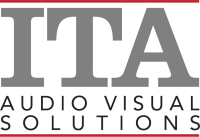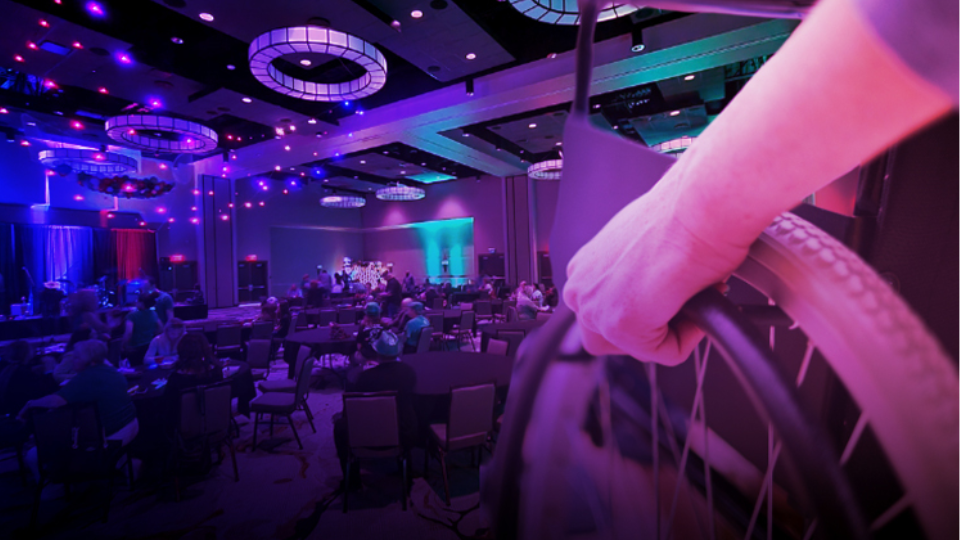Planning an Inclusive and Accessible Event
Creating an event that is both inclusive and accessible is no longer just a nice-to-have feature; it’s a necessity. According to the World Health Organization (WHO), approximately 1.3 billion people globally experience significant disabilities. This staggering statistic underscores the importance of ensuring that events cater to everyone, regardless of their physical or cognitive abilities. As event planners, it is both a professional and ethical responsibility to make every event accessible and inclusive.
In this article, we will explore the key aspects of planning an inclusive and accessible event. We’ll cover accessibility considerations, the importance of accessible communication, and the steps needed to accommodate people with disabilities. By the end, you’ll have a comprehensive understanding of how to create an inclusive event that caters to all attendees.
Understanding the Needs of Attendees
Before diving into event logistics, the first step is understanding the needs of your attendees. This is crucial for creating an inclusive and accessible AV event. You can gather this information through pre-event surveys or registration forms that ask attendees to specify if they require accommodations such as hearing devices, wheelchair access, or visual aids. Knowing your audience will allow you to plan effectively and address as many physical, communication, and technological barriers as possible.
Accessible Communications
Communication is essential in any event. For an inclusive event, it’s important to ensure that communication is accessible to everyone. This involves providing materials in multiple formats, such as large print, braille, or digital versions compatible with screen readers. You should also ensure that presentations and speeches are accompanied by live captioning and that sign language interpreters are available if needed. This fosters an environment where individuals with disabilities can engage fully.
Choosing an Accessible Venue
Selecting an accessible venue is one of the most critical decisions in event planning. An accessible venue ensures that all attendees, regardless of their mobility, can navigate the space with ease. Key considerations include ramps, elevators, accessible bathrooms, and ample space for wheelchairs. It’s also important to ensure that the seating arrangements provide clear sightlines to stages and screens, and that AV equipment is placed in ways that do not obstruct access.
Accessible Venue Checklist
To help with venue selection, use an accessible venue checklist. This checklist should include questions such as: Are there wheelchair ramps? Are there accessible bathrooms? Is there accessible parking close to the entrance? Does the venue have adjustable lighting and audio equipment for attendees with visual or hearing impairments? By answering these questions ahead of time, you can ensure your venue meets the needs of all attendees.
Assistive Technology
Assistive technology plays a significant role in making events accessible. Devices such as FM or infrared systems can be provided for attendees with hearing impairments. For virtual or hybrid events, make sure the streaming platform supports captioning and that the interface is accessible to screen readers. Other assistive technologies include live captioning, speech-to-text tools, and devices that allow people with cognitive disabilities to engage with the event at their own pace.
Creating an Accessible Event Website
The event website is often the first point of interaction for attendees, so it’s important that the website is accessible. This means ensuring the website is compatible with screen readers, has alt text for images, and uses a clear and logical layout. Providing accessibility information on the event website is also crucial. This could include details about accessible entrances, seating options, and accommodations for individuals with disabilities.
Accommodating Individuals with Disabilities
Providing accommodations for individuals with disabilities goes beyond physical access. It involves offering different types of support depending on the needs of the attendees. This could mean offering a quiet space for people with cognitive disabilities or providing assistive listening devices for those with hearing impairments. Clear signage throughout the venue will help guide attendees, and ensuring that event staff are trained in disability etiquette will improve the overall experience.
Planning for Accessibility
Accessibility should be a priority from the very beginning of the event planning process. By factoring in the needs of people with disabilities early on, you can avoid last-minute changes that can be costly or disruptive. Plan for accessible entrances, signage, and seating areas, and ensure that AV setups are designed to accommodate all attendees. By incorporating accessibility into the planning phase, you create a more inclusive event.
Accessible Event Checklist
A comprehensive accessible event checklist is essential to ensuring that all aspects of your event are accessible. This checklist should include everything from the venue’s physical layout to the accessibility of your digital materials. Make sure that AV equipment is positioned in a way that doesn’t block the view of attendees, and ensure that all presentations have accompanying captions and visual descriptions for those with hearing or visual impairments.
Communication Considerations
Communication considerations are key when planning an accessible event. This involves making sure that all event materials are accessible and that attendees are informed about available accommodations. For example, provide large-print versions of programs and ensure that instructions for using assistive technology are clear and easy to follow. Attendees should feel comfortable making accommodation requests, and event staff should be trained to respond to these requests efficiently.
Virtual Events and Accessibility
With the rise of virtual events, accessibility in the digital space has become increasingly important. Virtual events should include features such as closed captions, keyboard navigation, and compatibility with screen readers. Platforms that support live captioning and have user-friendly interfaces for people with disabilities are essential in creating a fully inclusive virtual event.
Wheelchair Accessibility
One of the most visible aspects of event accessibility is ensuring that wheelchair users can navigate the venue easily. This includes providing ramps, elevators, and wide doorways. If the event involves stages or podiums, ensure that there are ramps or lifts available for individuals who use wheelchairs to access these areas.
Assistive Technology in Practice
Assistive technology should be a standard part of any accessible event. From listening devices for people with hearing impairments to screen readers for people with visual impairments, assistive technology can break down barriers to participation. Make sure that your AV team is familiar with these technologies and that they are incorporated into the overall event setup.
Event Staff and Disability Etiquette
Your event staff play a crucial role in creating an inclusive atmosphere. Training your staff on disability etiquette is essential in ensuring that people with disabilities feel welcome and respected. This training should cover how to interact with individuals who have different types of disabilities, how to offer assistance without being intrusive, and how to respond to accommodation requests.
Inclusive Signage
Signage is another important consideration in event planning. Signs should be large, clear, and easy to read, with braille or tactile versions available for those with visual impairments. Signage should also include directions to accessible restrooms, elevators, and ramps.
Providing Presentation Accessibility
Presentations should be accessible to all attendees, including those with hearing or visual impairments. This means providing live captioning, ensuring that visual presentations have audio descriptions, and offering copies of presentation materials in accessible formats.
Accommodating Cognitive Disabilities
Events should also consider the needs of individuals with cognitive disabilities. This can be achieved by offering quiet spaces where attendees can take a break from the noise and stimulation of the event. It also involves providing clear, straightforward instructions and ensuring that communication is simple and easy to follow.
Accessible Audio-Visual Setup
The audio-visual setup plays a key role in making your event accessible. Ensure that AV equipment is positioned in a way that is easy for everyone to see and hear. Consider offering assistive listening devices for attendees with hearing impairments, and ensure that there are no physical barriers that might obstruct the view of screens or stages.
Accessible Event Planning Guidelines
Following accessible event planning guidelines is essential in creating an inclusive experience. These guidelines cover everything from physical accessibility to ensuring that event materials are available in multiple formats. Following these guidelines will help you create a welcoming environment for all attendees.
Virtual Events: Addressing Accessibility Challenges
Virtual events pose unique accessibility challenges, but they can also provide opportunities for inclusion. Make sure that your virtual event platform is accessible and that attendees are informed about the availability of closed captions, sign language interpreters, and assistive technology.
Ensuring an Inclusive Atmosphere
An inclusive atmosphere is achieved when all attendees feel welcome and able to participate fully. This requires not only physical accommodations but also fostering an environment where individuals with disabilities are treated with respect and consideration.
Event Signage Considerations
Clear, visible signage is a critical component of an accessible event. Signs should direct attendees to accessible restrooms, entrances, and seating areas. Braille or raised lettering on signs ensures that individuals with visual impairments can navigate the space independently.
Responding to Accommodation Requests
Responding to accommodation requests is a key part of hosting an inclusive event. Make sure that attendees know how to make requests in advance and that your team is prepared to provide the necessary accommodations.
Creating a Welcoming Environment
Creating a welcoming environment involves more than just meeting legal accessibility requirements. It involves making people with disabilities feel that they are valued participants in your event. This can be achieved by being proactive in your planning and ensuring that all attendees have access to the same opportunities to participate and engage.
By following these steps and paying close attention to accessibility in every aspect of event planning, you can create a truly inclusive and accessible event. This not only benefits individuals with disabilities but also enhances the experience for all attendees, making your event a success for everyone involved.

